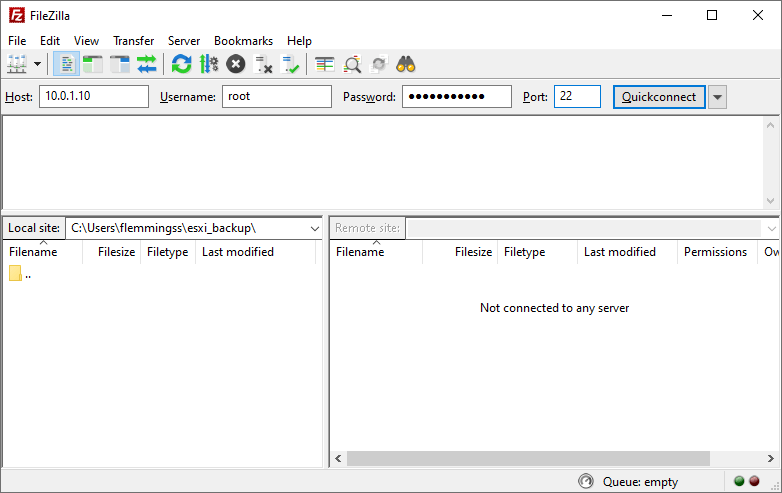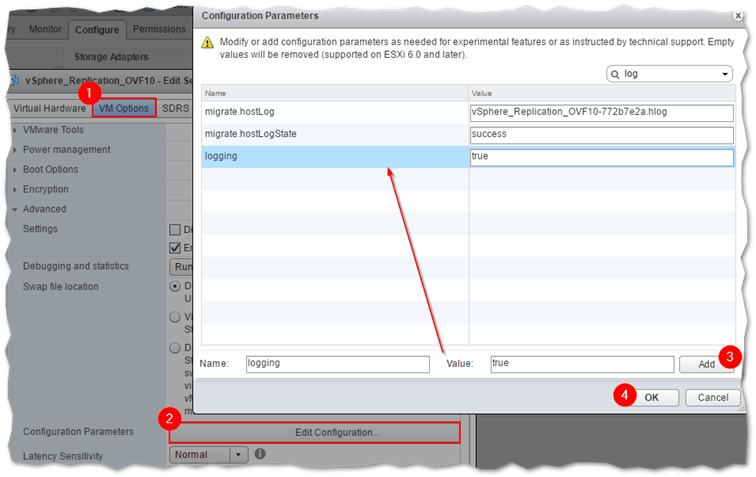

- #HOW TO GET FILES FROM DATASTORE TO VM ESXI 6.5 INSTALL#
- #HOW TO GET FILES FROM DATASTORE TO VM ESXI 6.5 LICENSE#
- #HOW TO GET FILES FROM DATASTORE TO VM ESXI 6.5 DOWNLOAD#
- #HOW TO GET FILES FROM DATASTORE TO VM ESXI 6.5 FREE#
- #HOW TO GET FILES FROM DATASTORE TO VM ESXI 6.5 MAC#
Since we can’t pick proxies in the Free Edition, on the “Transfer” step they will be left at automatic and will use Veeam backup server itself.Ĩ.
If you want to move only particular disks, you can do so by clicking “Pick datastore for selected virtual disks” below the main datastore field.ħ. Make sure that you’ve picked correct host, resource pool and VM folder in the first three fields as well! Proceed to the “Destination” step where you can pick a new target datastore for your VM(s). In case you need to move other VMs’ disks as well, you can always add more via the corresponding button.Ħ. Inside the wizard, you’ll find this VM already added to the list. Launch Veeam Backup & Replication Console from your desktop and start by adding your VMware vSphere Server- it can be either vCenter or ESXi host.Ĥ. Now that you’re able to browse your infrastructure, find the VM that you need to move, right-click on it and select “Quick Migration.”ĥ. #HOW TO GET FILES FROM DATASTORE TO VM ESXI 6.5 LICENSE#
Since we’re rolling with Veeam Backup Free Edition, no license is required during installation.ģ.

#HOW TO GET FILES FROM DATASTORE TO VM ESXI 6.5 INSTALL#
Install it on a virtual or physical 64-bit Windows machine (see the full list of supported operating systems) that has access to the production environment.
#HOW TO GET FILES FROM DATASTORE TO VM ESXI 6.5 DOWNLOAD#
It is also advised to download latest update.Ģ.If you’re already familiar with our product or have used Quick Migration before, then you can skip to step six. Now, let’s get to the scenario where your host remains the same, and only location of VM’s disks is due to change. At least a minimum paid license of VMware ESXi is required for proper operation of Veeam Backup Free Edition due to API restrictions of free ESXi.
 Quick Migration is available only for VMware environments. Quick Migration comes in every edition of Veeam Backup & Replication and is essentially a one-time replication that allows you to easily move live VMs from one VMware host to another or to move VMs between existing datastores on the same ESXi host without any downtime.
Quick Migration is available only for VMware environments. Quick Migration comes in every edition of Veeam Backup & Replication and is essentially a one-time replication that allows you to easily move live VMs from one VMware host to another or to move VMs between existing datastores on the same ESXi host without any downtime. 
In our previous post, we unveiled how you can move your VM from one ESXi host to another by using Quick Migration feature of Veeam Backup Free Edition. The good news is, there is a way to substantially simplify this task with the help of Veeam! And, what’s even better, you won’t have to pay another penny for that. The bad news is, since VMware Essentials Kit doesn’t include the handy features like vMotion and Storage vMotion, you have to move everything manually. And, as the title says, you are now set with the task of moving a VM from one datastore to another. But even the simplest setups may have to be reconfigured or adjusted further down the line. That is where VMware Essentials Kit license steps in, providing cover for all of your basic needs and saving you quite a few bucks. Share this.Not every infrastructure requires multiple hosts to sustain your production environment, let alone enterprise licenses with features you don’t really need. He's a computer enthusiast, GNU/Linux passionate and an obstinate dreamer. Graduated in Computer Engineering at Federico II university of Naples.
rm -rf "/vmfs/volumes/source_datastore/Some VM". If the VM boots up fine, you can remove the VM from the old datastore. #HOW TO GET FILES FROM DATASTORE TO VM ESXI 6.5 MAC#
(I’m not sure what this means, but I think it has to do at least with the MAC address of the vNIC being changed.)
Boot up the VM to see if it works, when asked whether you copied or moved it, just answer that you copied it. Browse to your VM and right click the. In the vSphere client go to: Configuration->Storage->Data Browser, right click the destination datastore which you moved your VM to and click "Browse datastore”. Once done cloning and copying all necessary files, add the VM from the new datastore back to inventory. find "/vmfs/volumes/source_datastore/Some VM" -maxdepth 1 -type f -print0 | grep | grep ".vmdk" | while read file do cp "$file" "/vmfs/volumes/destination_datastore/Some VM" done. vmdk delta files, we also need to copy these (this may take some time): If you did not consolidate snapshots in step 2, there may be snapshot. find "/vmfs/volumes/source_datastore/Some VM" -maxdepth 1 -type f -print0 | grep -v ".vmdk" | while read file do cp "$file" "/vmfs/volumes/destination_datastore/Some VM" done. Copy any remaining files (avoiding overwriting the. vmkfstools -i "/vmfs/volumes/source_datastore/Some VM/Some VM.vmdk" -d thin "/vmfs/volumes/destination_datastore/Some VM/Some VM.vmdk". mkdir "/vmfs/volumes/destination_datastore/Some VM". Prepare a directory on the destination datastore. In the vSphere client go to: Configuration -> Security profile -> Properties (next to Services) -> SSH (in the list) -> Options -> Start. Right click VM and click “Remove from Inventory". (Optional) Consolidate snapshots if needed. The process is not too complex but it requires some explanation: After replacing or upgrading some storage on your VMware ESXi server it could be useful or mandatory to move some VM to a new datastore.








 0 kommentar(er)
0 kommentar(er)
